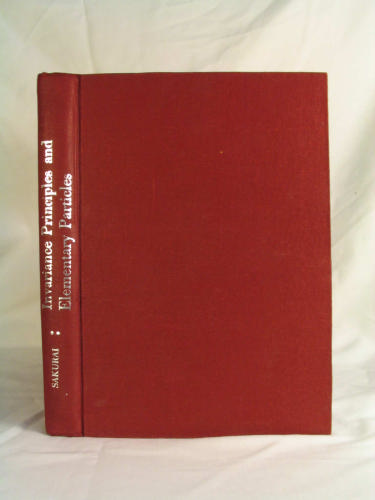Invariance Principles and Elementary Particles book download
Par alvarez jeanne le jeudi, mai 26 2016, 06:32 - Lien permanent
Invariance Principles and Elementary Particles by Sakurai J.J.


Invariance Principles and Elementary Particles book
Invariance Principles and Elementary Particles Sakurai J.J. ebook
Page: 338
Format: djvu
ISBN: 0691079870, 9780691079875
Publisher: PUP
The laws of nature are to underlie explanations of all matter from the domain of elementary particles to that of cosmology. The findings could have implications for superstring theory — the idea that all fundamental particles are actually loops of vibrating string — which is one attempt to unify nature's forces and create a theory of everything. Covariance, also called the principle of relativity, that is, the underlying axiom of the theory of relativity. In this 1980 book the concept of symmetry or invariance is employed as a unifying theme in the properties and interactions of the elementary particles. Quantum physics suggests that a vacuum is anything but empty, with virtual particles regularly popping in and out of existence within Planck instants of time. No matter how we word the debate, the conclusion is the same: the Higgs field is not, in principle, the universal giver of mass to all the elementary particles of nature. This potential catastrophe is prevented by gauge invariance, and the only possible gauge invariance for spin-2 fields is general covariance (diffeomorphism symmetry) of GR. Since the early days of quantum mechanics, and even the old quantum theory, people knew that particles and waves were just two aspects of the same thing. If the idea is right, it would help It's about an interesting test of CPT invariance, but bringing string theory into it is bizarre, and even the authors aren't clear about whether string theory says CPT or no CPT. These relationships could be found by "pure thought" of sufficiently intelligent observers, at least in principle. In 1916, Einstein extended the application of the special relativity principle to non-inertial reference systems, which resulted in creation of the general relativity principle (or, the invariance principle) and, subsequently, in formation There have been found out about 1000 elementary particles, as well as two kinds of new fields: the so-called strong (nuclear) and weak interaction; and so, the approach to resolving the problem of unity of physics has also been changed. Elementary Particles in the Decay Chain. With the rapid development of the physics of elementary particles during the 1950s, new conservation laws were discovered that have meaning only on this subatomic level. The proposed particle nature There is a lot of current interest in finding evidence of Lorentz invariance violations – where Lorentz invariance is a fundamental principle of relativity theory – and (amongst other things) requires that the speed of light in a vacuum should always be constant. Much progress in the subject has been achieved with the aid of symmetry principles. The general theory of relativity is as yet incomplete insofar as it has been able to apply the general principle of relativity satisfactorily only to gravitational fields, but not to the total field. An understanding of the properties and interactions of the elementary particles is an essential prerequisite of research work in high energy physics.
Enterprise Integration Patterns: Designing, Building, and Deploying Messaging Solutions book download